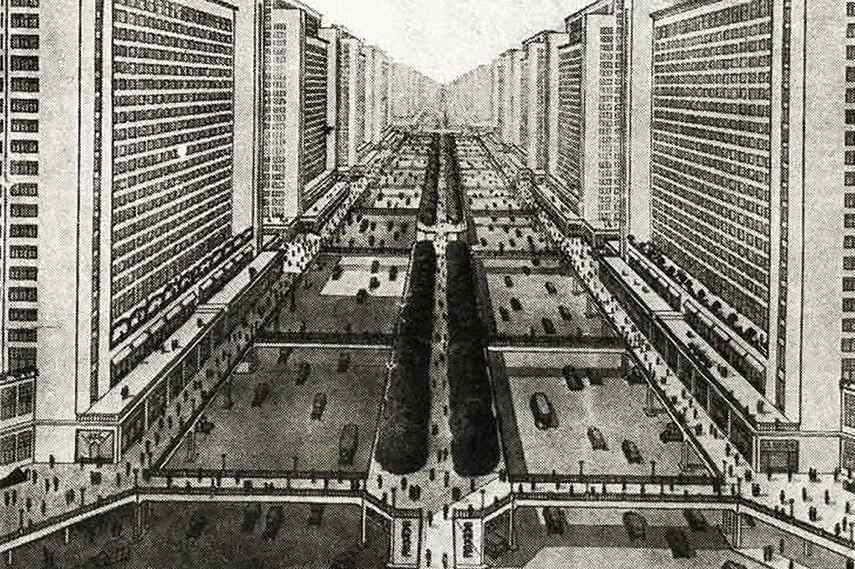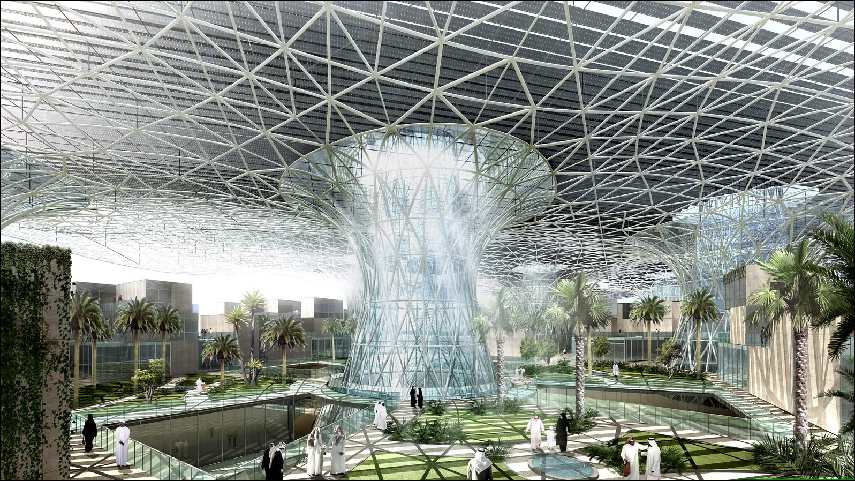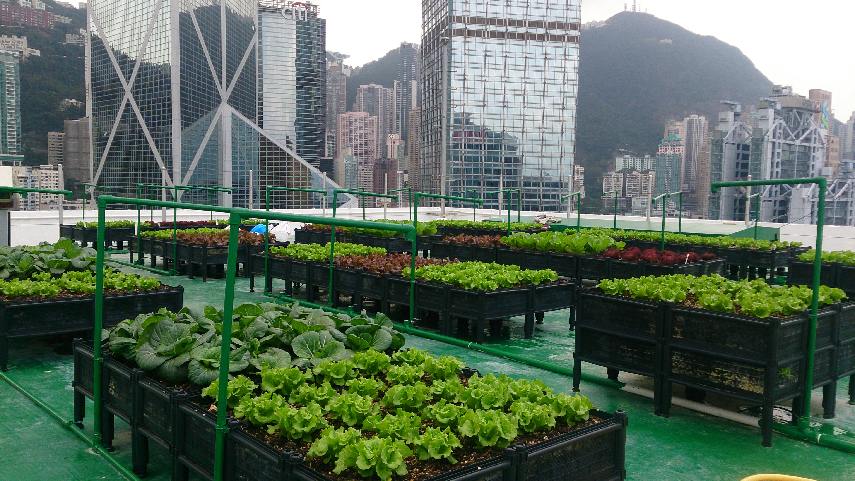Future Cities - Are They Going Green or Derelict? A Word on Architecture and Environment
When we look back on the early twentieth century visions for the future, with futuristic celebrations of modernity, industrialization, and technology we become increasingly aware of the consequences and impact the modernist ideas had on our current urban environments and ways of life. Early twentieth century models of urbanization were guided by the industrial optimism without any consideration of the long-term environmental outcomes. It is clear to us now that these tendencies are not sustainable in the future. It is estimated that by 2050 three-quarters of the world population will be inhabitants of the urban environment. The rapid urbanization has its economic benefits to be sure, but if we have in mind that the cities are responsible for the use of 80% of all the energy and that they are the world’s biggest producers of the world’s greenhouse gasses, then we have to wonder if today we need another vision for our future cities.

Why We Need the Ideas of Future Cities
The concept of future cities is not new and the earliest notions of the term can be traced back to the ancient times. The term future cities is often used to describe the ideal imaginative projections of what cities will be like, regardless of the fact analysis and investigations. In the last couple of decades, the term was used more frequently as a response to the pressing issues of rapid urbanization and globalization. It became clear that the cities are not only isolated places that affect only the ways of life of the urban citizens but have a significant influence on the global environment, economy, and society. Future cities as a concept has been used by various groups to mark different things, but primarily it was revitalized to introduce the idea of positive change and adjust the mistakes of the past. The challenges the cities of today face are more serious than a century ago. In our age, the cities need to accommodate more people due to the population growth, migrating trends and ever-increasing human mobility, while at the same time they need to provide social security, stability and great quality of life for all. Environmental issues thus appear as one of the most important challenges in the growing cities.

Sustainable, Smart, Resilient Cities
The holistic approach to the idea of cities is widely present in today’s architectural and public discourses. The city is seen as the system or network of entities with its own dynamics and properties that respond to surrounding environments. Since 80% of carbon emissions come from the cities, this is the place where this problem must be addressed. Similar to the future cities idea, there are several other terms used to describe the proposed plans for the change. Among the most popular ones are certainly sustainable cities, projects focused on the minimization of environmental impact and energy consumption. Intelligent or smart cities, on the other hand, refer to the ideas of enhanced information systems and use of digital technology that provide a space of better connectivity and responsive public services. Another popular idea is the one of resilient cities the cities capable of withstanding environmental, economic or social shocks. All these ideas are based on the pro-active attitude towards the future, finding the best way to introduce adaptive measures and coordinate growth strategies with eco-friendly behavior.

Masdar City - The First Zero-Carbon City
Another popular idea is the one of eco-cities with the ultimate goal to achieve zero carbon emission and eliminate all carbon waste. Perhaps the most popular example of this experiment is the city of Masdar in the United Arab Emirates. The Masdar City is the brainchild of Masdar, renewable energy company, and almost completely funded by the Government of Abu Dhabi. The building of the city started from scratch and the completion is expected between 2020 and 2025. The idea for Masdar City is to build a model for sustainable living, the carbon-neutral city, completely powered by green energy. Although the idea was praised and supported by the environmentalist organizations, so far Masdar City is still a ghost town. However, the building of the Masdar City inspired other states to introduce their similar experiments. China, the largest producer of carbon-dioxide started building its own eco-city of Tianjin, transforming toxic waste disposal grounds into a high-tech, emission free future city. However, just like the project in Abu Dhabi this one is also criticized and there are many who suggest that instead of building zero-carbon cities from the scratch there should me more efforts to make the existing ones more sustainable.
Singapore is among the best and most inovative future city examples

International Examples of Sustainable Cities
When we talk about the city sustainability, there are lots of great examples all over the globe where the city officials and specialists have managed to introduce long-term advanced environmental policies, reducing gas emissions, promoting environmentally friendly means of transportation and creating more green spaces. Singapore is perhaps the leading example how with the ongoing efforts the city can solve the problems of heavy pollution after industrialization. Singapore is now the greenest city in Asia with green building requirements incorporated into the legislation. One of the biggest challenges the sustainable cities have to face is how to coordinate economic development with environmental protection. The other cities which successfully manage to do so are Vancouver, Scandinavian capitals Stockholm, Oslo and Helsinki, Curitiba in Brazil and Freiburg, Germany among others.

Bringing Nature Back to the Cities – The Task for the Future
The plans for the future cities mostly depend on the collaborations between different groups of people with different interests and priorities. We’ve seen in the recent years that local communities and individuals are working hard to implement changes finding innovative ways of bringing back nature into the urban environments. From hobby farming, guerrilla gardening to sky gardens and rooftop fish farms there are more interesting initiatives to be found in the concrete environments. However, the literal greenness of the cities and individual or small group actions cannot truly achieve the sustainability goals. The future cities following the ideas of positive change will depend on collaborations of architects, city planners, engineers, along with demographers, economists, politicians, investors, and citizens. The environmental issues are present today more than ever, and climate change effects are mostly felt in the urban environments. The environmental awareness isn’t enough to solve the problem. The way cities are governed and open dialogues between officials and specialists will have a crucial impact on the future of the cities themselves and global environment in the long run.
Editor’s Tip: Daniel Brook – A History of Future Cities
Deemed one of The Washington Post’s Favorite Books of 2013, this book explores the four cities on the border between East and West and where past and future blend together: Shanghai, Mumbai, Dubai, and St. Petersburg. In an enthralling combination of history and reportage, Daniel Brook flies us to a number of major metropolitan hubs to help us understand the conflicted influence of the West on developing-world cities over the span of centuries. By juxtaposing the stories of architects and authoritarians, artists and revolutionaries, Brook shows how the urge for modernization was initially confused with extensive Westernization. Thus, A History of Future Cities is simultaneously a pivotal reminder of globalization and an inspiring glance into the possibilities that the future holds.
Featured image: Tianjin Eco City Plan. All images used for illustrative purposes only.
Can We Help?
Have a question or a technical issue? Want to learn more about our services to art dealers? Let us know and you'll hear from us within the next 24 hours.

